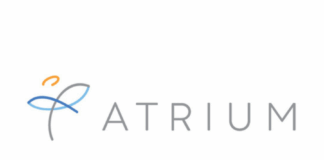
Key takeaways:
- Job growth slowed dramatically: BLS reported only 73,000 jobs added in July, while massive downward revisions of 258,000 jobs for May-June combined revealed the labor market was much weaker than initially thought.
- Contrasting private sector signals: ADP showed a strong rebound with 104,000 private jobs added, driven by leisure/hospitality and financial services, while BLS data showed continued federal government job losses and weakness in professional services.
- Mixed labor market indicators: Unemployment ticked up to 4.2%, long-term unemployment rose significantly, and more people entered the job market, but wage growth remained steady at 3.9% annually.
Nonfarm payroll added 73,000 jobs in July, according to the latest report from the Bureau of Labor Statistics (BLS). This represents a significant slowdown from June’s revised figure of 14,000 (down from the previously reported 147,000) and May’s revised figure of 19,000 (down from 144,000). The downward revisions mean employment in May and June combined is 258,000 lower than previously reported, a significant revision.
Most of the employment growth for July was in health care (+55,000) and social assistance (+18,000). Health care added jobs above its 12-month average, with gains in ambulatory health care services (+34,000) and hospitals (+16,000). However, federal government continued to lose jobs (-12,000), now down 84,000 since reaching a peak in January.
Professional and business services lost 14,000 jobs, with temporary help services cutting another 4,400 positions, continuing a persistent downward trend in this sector.
Other highlights from the latest BLS report include:
- The unemployment rate edged up to 4.2% over the month, with 7.2 million people unemployed, and the rate has stayed between 4.0% and 4.2% since May 2024.
- The employment-population ratio decreased slightly to 59.6%, and the labor force participation rate fell by 0.1 percentage point to 62.2%.
- The number of people employed part time for economic reasons was at 4.7 million.
- Long-term unemployment (27 weeks or more) rose by 179,000 to 1.8 million, now accounting for 24.9% of all unemployed people.
- New entrants to the labor force increased significantly by 275,000 to 985,000.
- Average hourly earnings increased by 12 cents to $36.44, contributing to a 3.9% rise over the past 12 months.
Private employment adds 104,000 jobs
ADP’s National Employment Report showed private sector employment increased by 104,000 jobs in July, marking a strong rebound from June’s revised decline of 23,000 jobs (improved from the initially reported -33,000). This represents the strongest monthly gain since February.
“Our hiring and pay data are broadly indicative of a healthy economy,” said Dr. Nela Richardson, chief economist at ADP. “Employers have grown more optimistic that consumers, the backbone of the economy, will remain resilient.”
July gains were driven by a resurgence in service-providing sectors, which added 74,000 jobs, led by leisure and hospitality (+46,000) and financial activities (+28,000). Goods-producing sectors contributed 31,000 jobs, with construction (+15,000) and natural resources/mining (+9,000) showing particular strength. However, education and health services continued to struggle, losing 38,000 jobs and posting a net loss for the year.
Year-over-year pay gains remained stable in July, with job-stayers seeing 4.4% wage growth (unchanged from June) and job-changers experiencing 7.0% wage growth (up from June’s 6.8%). Pay growth has held steady for the past four months, suggesting continued labor market resilience despite hiring fluctuations.





